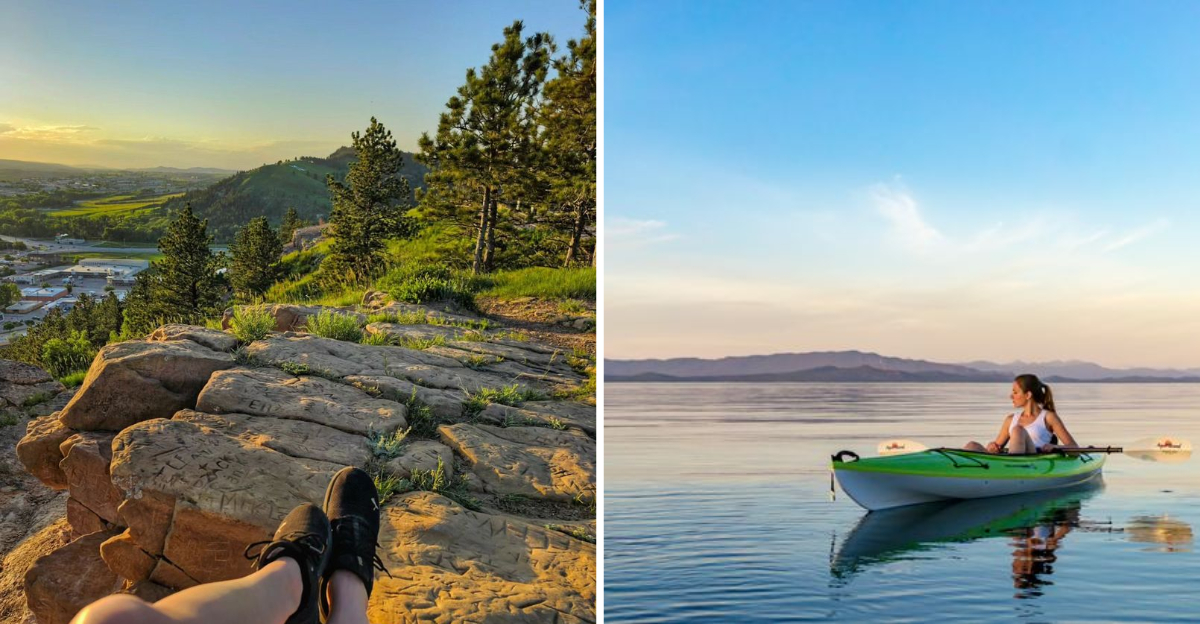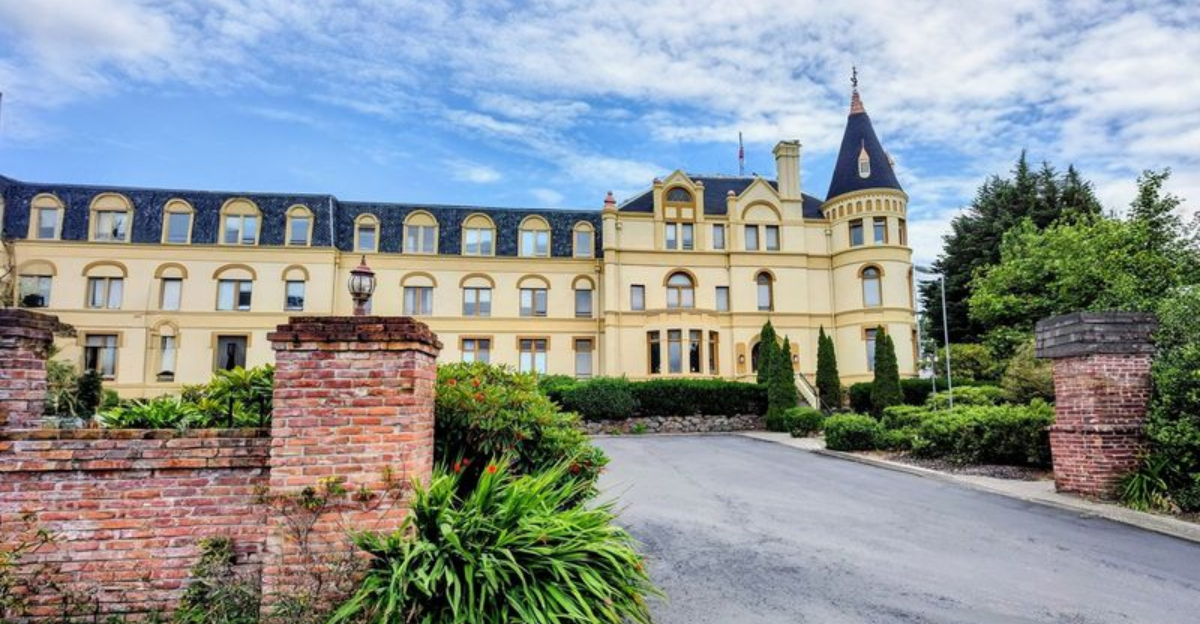10 Picture-Perfect Villages For An Authentic French Experience
Forget the Eiffel Tower for a minute and picture sipping espresso in a storybook village where roses climb the walls and church bells echo through the hills.
Across the French countryside, hidden gems whisper tales of old stone, slow mornings, and markets that smell like fresh baguettes and lavender.
These postcard-perfect towns prove that the real magic of France isn’t in Paris – it’s in the places where time still takes its sweet time.
Disclaimer: Historical and cultural descriptions are provided for general informational and educational purposes. Travel experiences, accessibility, and conditions may vary by season and local management. Visitors should verify opening hours, safety regulations, and accessibility before traveling. All geographic and historical references are accurate to the best of current public information.
1. Riquewihr (Alsace)
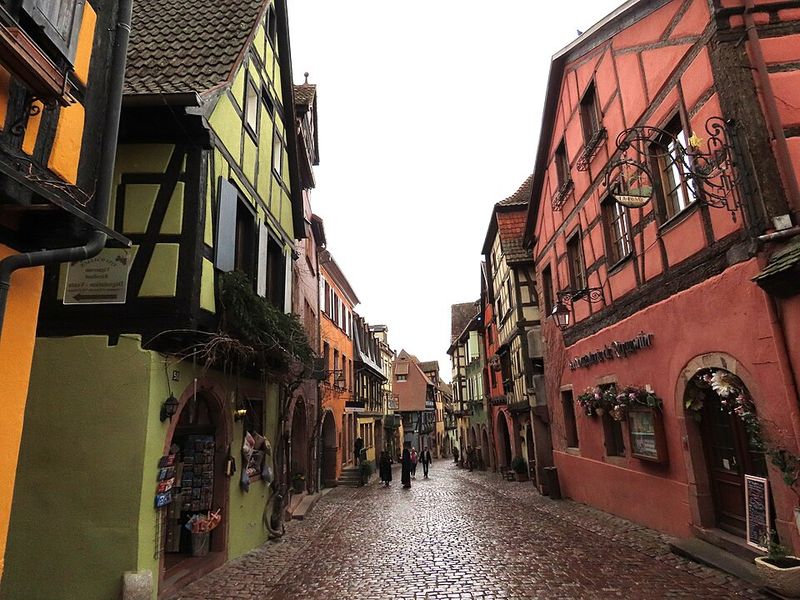
Imagine walking through a village that’s basically a time machine back to the 1500s. Riquewihr looks like someone painted it with every color in the crayon box, and somehow it all works together perfectly.
The half-timbered houses lean in close along narrow streets, creating cozy pathways that beg to be explored.
Vineyards hug the village from every side, which means wine is kind of a big deal here. But even if you’re not into fancy drinks, the bakeries and cheese shops will make your taste buds do a happy dance.
Plus, the village stayed untouched during World War II, so everything you see is genuinely old and authentic.
Winter transforms this place into a holiday card come to life, with twinkling lights and festive markets.
2. Eguisheim (Alsace)
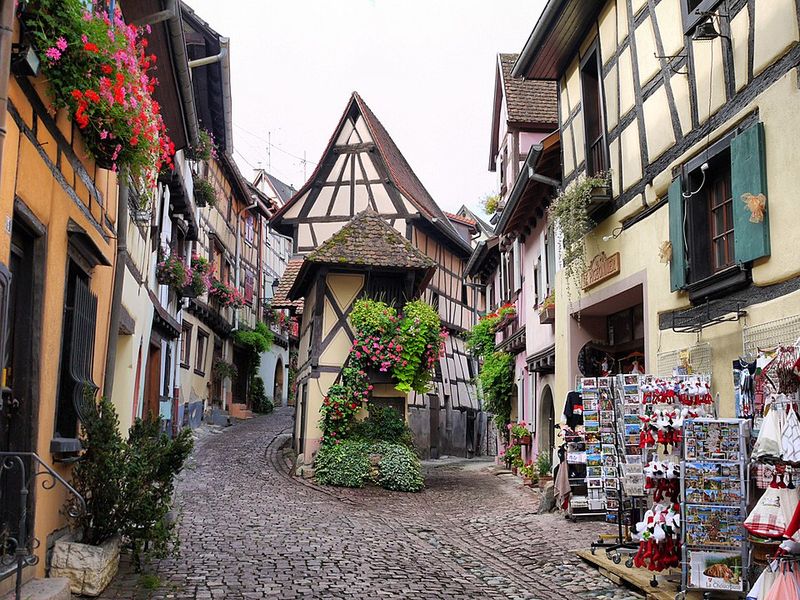
Ever seen a village built in circles? Eguisheim wraps around itself like a snail shell, with streets forming rings that spiral outward from the center. This quirky layout dates back to medieval times when people wanted to stay close together for protection.
Flowers explode from every windowsill and balcony, turning the village into a living garden that wins awards year after year. The locals take serious pride in making their homes look Instagram-worthy, though they were doing it long before social media existed. Walking these circular streets feels like following a treasure map where every turn reveals another postcard moment.
The village also claims to be the birthplace of Alsatian wine, so history runs deep in these colorful walls.
3. Gordes (Provence)

Perched on a cliff like it’s defying gravity, Gordes stacks honey-colored stone buildings in a way that makes architects scratch their heads in awe. From afar, the village seems to have sprouted from the rock itself, merging earth and artistry into one breathtaking panorama.
Artists have been smitten for decades, setting up easels to chase the golden light that kisses the stones at sunset. Narrow streets twist upward, so wear comfy shoes unless you enjoy turning purple from effort. Markets fill the squares with lavender, olives, and Provençal goodies that smell as heavenly as they taste.
Word to the wise: catching the sunrise here feels like watching the world’s softest curtain lift on perfection.
4. Roussillon (Vaucluse)
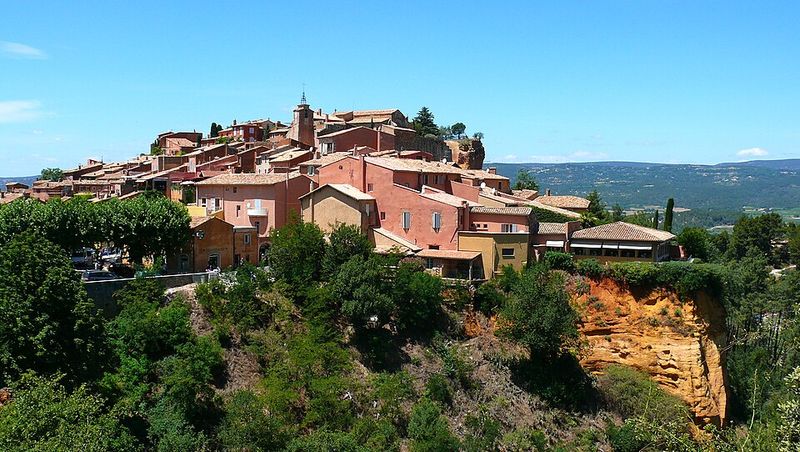
What happens when you build a village on top of ochre deposits? You get Roussillon, where every building glows in shades of red, orange, and yellow like a permanent sunset. The natural pigments in the soil gave locals free paint for centuries, and they used it generously on every wall and shutter.
Behind the village, the Ochre Trail winds through former quarries that look more like Mars than France, with towering red cliffs and sandy paths. Kids love pretending they’re exploring an alien planet while parents snap a million photos. The contrast between the rusty earth tones and the green pine trees creates a color combination that shouldn’t work but absolutely does.
However, watch out for your white sneakers on the trails!
5. Saint-Cirq-Lapopie (Lot)
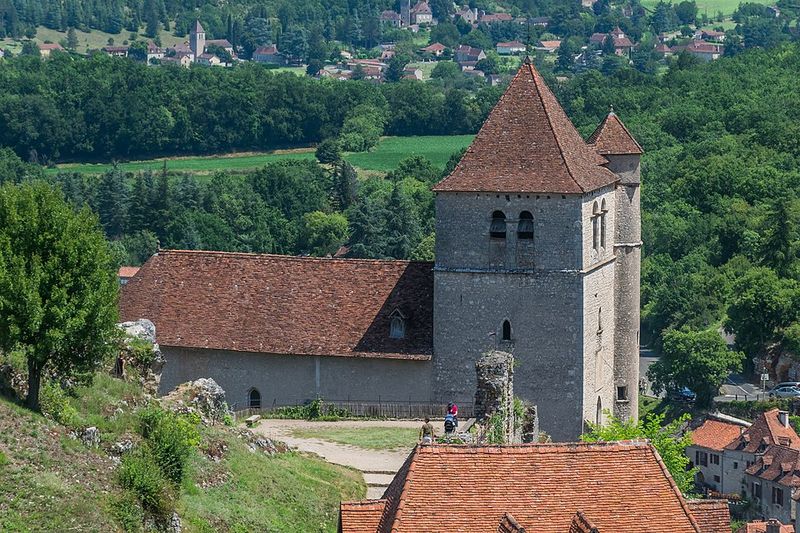
Clinging to a cliff a hundred meters above the Lot River, Saint-Cirq-Lapopie flaunts its drama with every sun-kissed stone.
Medieval homes topped with terracotta roofs spill down the rocky slope like they’re part of a fairytale that forgot gravity. Artists and writers have lingered here for generations, lured by views so gorgeous even the grumpiest traveler can’t help but pause.
Cobblestone lanes stay blissfully quiet, cars banned so church bells and birds do all the talking. The air carries scents of fresh bread, lavender, and old stone warmed by sunlight. Hidden workshops hum with craftspeople preserving traditions by hand. Legs might ache from the climb, but hearts – and camera rolls – overflow once the panorama unfolds.
6. Rocamadour (Lot)
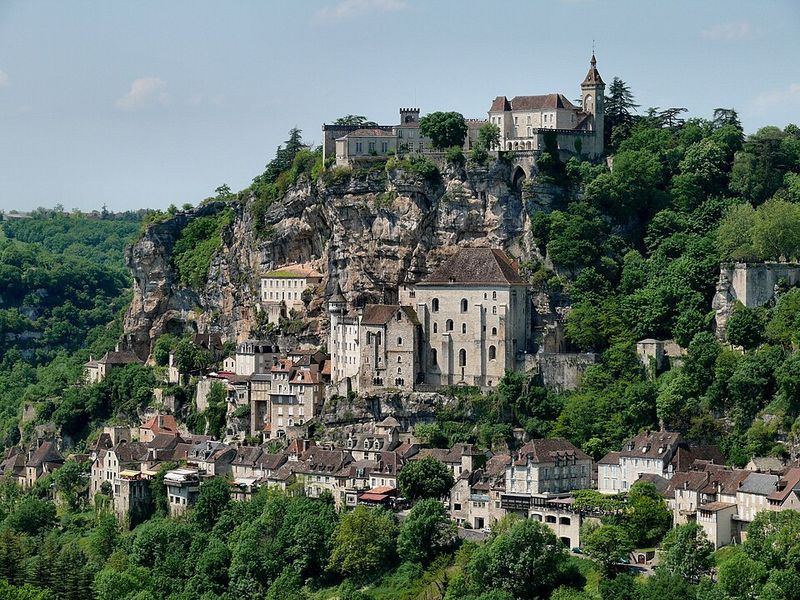
Rocamadour doesn’t just sit on a cliff, it basically IS the cliff, with buildings stacked vertically like a medieval apartment complex designed by someone who’d never heard of elevators. Seven chapels and a basilica cling to the rock face, connected by staircases that’ll have you counting your steps and questioning your life choices.
Pilgrims have been climbing these stairs on their knees for over a thousand years, seeking blessings from the Black Madonna statue inside the chapel. Even if you’re not religious, the architectural audacity of building an entire village straight up a rock wall deserves respect. At night, lights illuminate the structures, making the whole cliff glow like something from a fantasy movie.
If heights make you nervous, maybe stick to admiring it from the valley below!
7. Èze (Alpes-Maritimes)
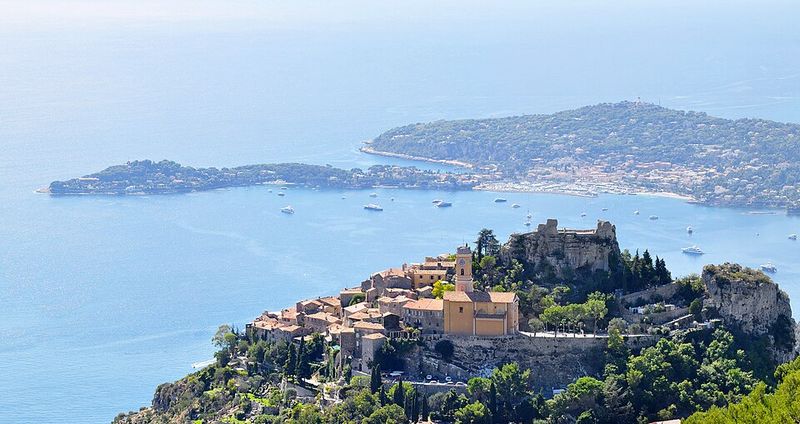
Hovering between mountains and Mediterranean waves, Èze delivers both serenity and spectacle on clear days. Medieval walls perch so high that cruise ships below drift by like toy boats in a painter’s dream. Stone paths twist upward through arches scented with perfume and salt air, brushing past art galleries that glimmer like jewels in the sun.
At the top waits an exotic garden bursting with cacti, succulents, and ocean wind. Steps may steal your breath, yet every one leads closer to a panorama so surreal it feels like fiction – snow-tipped peaks on one side, tropical turquoise stretching forever on the other.
8. Conques (Aveyron)

Tucked into a valley so remote that it feels like a secret, Conques has been welcoming weary pilgrims since medieval times as a stop on the route to Santiago de Compostela.
The massive Romanesque abbey dominates the village, its twin towers watching over slate-roofed houses that tumble down the hillside.
Inside the abbey, stained glass windows by a modern artist splash rainbows of light across ancient stone walls, proving old and new can be best friends. The village stays refreshingly quiet compared to tourist hotspots, with locals who actually have time to chat instead of rushing past you.
Bridges cross babbling streams, and footpaths lead into forests where you can pretend you’re a medieval traveler on an epic quest.
Did you know? The abbey’s golden reliquary survived Viking raids and revolutions!
9. Yvoire (Haute-Savoie)
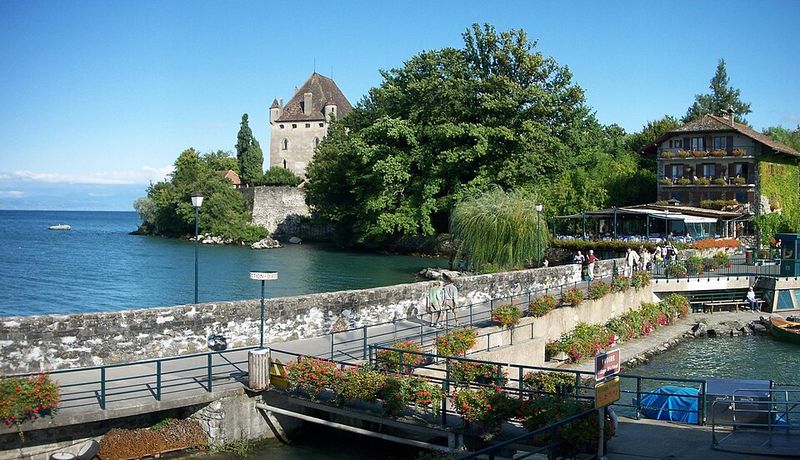
Sitting pretty on the shores of Lake Geneva with Switzerland shimmering across the water, Yvoire blends medieval charm with laid-back lakeside vibes. Cobblestone lanes bloom under cascades of geraniums and ivy, every wall perfumed with summer sweetness.
A turreted castle guards the harbor, where sailboats sway lazily like extras in a postcard scene. Stone cottages with wooden shutters squeeze close enough to share whispers in the wind. The Garden of Five Senses tempts visitors with fragrant herbs, velvety petals, and buzzing bees – proof that nature knows drama too.
Tiny but mighty, Yvoire brims with more beauty and warmth per cobblestone than towns ten times its size.
10. Beynac-Et-Cazenac (Dordogne)

With a fortress castle glaring down from a cliff like a stone superhero protecting the valley, Beynac-et-Cazenac means business when it comes to medieval atmosphere. Golden limestone houses huddle beneath the castle walls, connected by steep paths that make you grateful for modern leg day workouts.
The Dordogne River flows peacefully below, reflecting the village like a giant mirror on calm days. During medieval times, this castle faced off against its rival across the river in epic feuds that would make great movie plots. Today, the only battles involve tourists competing for the best photo spots on the castle ramparts, where views stretch across the valley in every direction.
If you love history with a side of stunning scenery, this place delivers both in abundance. Share your thoughts below about which village calls to you!





